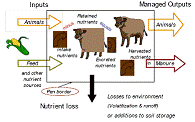Biological Systems Engineering, Department of

Department of Agricultural and Biological Systems Engineering: Presentations and White Papers
Date of this Version
5-2006
Document Type
Article
Abstract
Transfected cell arrays represent a high-throughput approach to correlate gene expression with functional cell responses, based on gene delivery from a substrate that supports cell adhesion. These arrays provide the ability to express, in parallel, thousands of exogenous genes in live cells, giving real-time information on cellular physiology and gene function. While there have been advances in transfected cell arrays, improvements are needed to this technology, including increasing the cells types that can be efficiently transfected and developing better quantification and normalization methods. We have created an array using soft lithography techniques to pattern DNA-lipid complex deposition. Specifically, a mold was fabricated by curing polydimethylsiloxane (PDMS) into thin, flat disks. Rods of precise diameters were then used to punch holes into the mold, with diameters ranging from 1 mm to 3 mm. The PDMS mold was oxidized and then reversibly sealed to polystyrene slides. The holes in the mold, termed microwells, served as reservoirs for complex deposition onto the polystyrene slides. After deposition, the PDMS mold was peeled away from the polystyrene slide, which was then rinsed thoroughly. DNA complexes were immobilized on the slide in distinct regions, replicating the pattern of microwells in the PDMS mold. Transfection of cells seeded onto these slides was also confined to the patterns.


Comments
Poster presentation, American Society of Gene Therapy Annual Meeting, Baltimore, MD, May 31-June 4, 2006.
Published in Molecular Therapy 13, Supplement 1 (May 2006), p. S66; doi:10.1016/j.ymthe.2006.08.194 Copyright © The American Society of Gene Therapy; published by Nature Publishing Group. Used by permission.